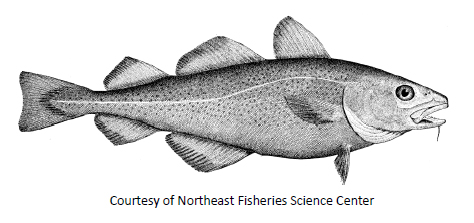The Magnuson-Stevens Act: Helping Restore New England's Valuable Fish Populations
 After decades of overfishing, the storied New England groundfish fishery appears to be on the road to recovery thanks in large part to the Magnuson-Stevens Fishery Conservation and Management Act (MSA). Congress should support this success by rejecting any attemps to weaken the MSA.
After decades of overfishing, the storied New England groundfish fishery appears to be on the road to recovery thanks in large part to the Magnuson-Stevens Fishery Conservation and Management Act (MSA). Congress should support this success by rejecting any attemps to weaken the MSA.
One of New England's oldest and most valuable fisheries, the groundfish fishery includes several iconic species such as cod and haddock that have supported local fishing towns for hundreds of years. Unfortunately, years of overfishing (catching fish faster than they can reproduce) led to plummeting population levels for many groundfish species. Today, thanks to the MSA, fishery managers have the tools in place to protect and restore the fish populations that are so important to New England's fishermen and fishing communities.
The MSA is the primary law that governs management of ocean fish populations in New England and throughout our nation's ocean waters. It was initially passed in 1976 and has been amended several times over the last 35 years with bipartisan support. The MSA's conservation provisions requires that managers set science-based catch limits that prevent overfishing and rebuild depleted fish populations. In 2010, the New England Fishery Management Council met those requirements in the groundfish fishery by setting enforceable annual catch limits and implementing a voluntary "sector" system that divides catch quotes among self-selected cooperatives of fishermen, giving fishermen the flexibility to choose when and how they fish. One year later, there is growing evidence that quotas are not being exceeded for the first time in over a decade and that overfishing might finally be under control. This is good news for both fish populations and coastal economies. Overall revenues have increased, while fishermen have stayed within their catch limits for all managed fish species.1 2 Recently, thanks to growing fish populations, managers were able to raise quotas for the 2011 fishing season for several species targeted by New England fishermen,3 including Georges Bank cod, Southern New England winter flounder and white hake, which all increased by more than fifteen percent.
Healthy fish populations depend upon the strong science-based catch limits and rebuilding plans provided by the MSA. Weakening the conservation provisions of the MSA will hurt both the fish populations and the fishing industry that relies on healthy fish populations and regulatory stability. Rather than undermining the progress gained over the past year, Congress should support targeted efforts to help fishermen impacted by changes to the fishery. Both permit banks, which lease quota to fishermen at below-market prices, and quota rollovers, which allow uncaught fish to be added to next year's quotas, would assist New England fishermen as they transition to long-term sustainability.
Congressional support for data collection and analysis appropriations will also help ensure that science is incorporated more quickly and efficiently into the management process, reducing uncertainty and allowing managers to increase fishing opportunities.
Endnotes
1 National Oceanic and Atmospheric Administration (NOAA). Sector Vessel Landings & Revenue, 2009 & 2010. Updated April 20th, 2011. http://www.nero.noaa.gov/ro/fso/reports/Sector_monitoring/Table_5.pdf
2 NOAA. Summary Table Sector Catch Monitoring. Updated April 21st, 2011. http://www.nero.noaa.gov/ro/fso/reports/Sectors/Sector_Summary.html
3 NOAA. New England fishing season to open with higher catch limits and more access for small-vessel fishermen. April 18th, 2011. http://www.noaanews.noaa.gov/stories2011/20110418_newenglandfishing.html






